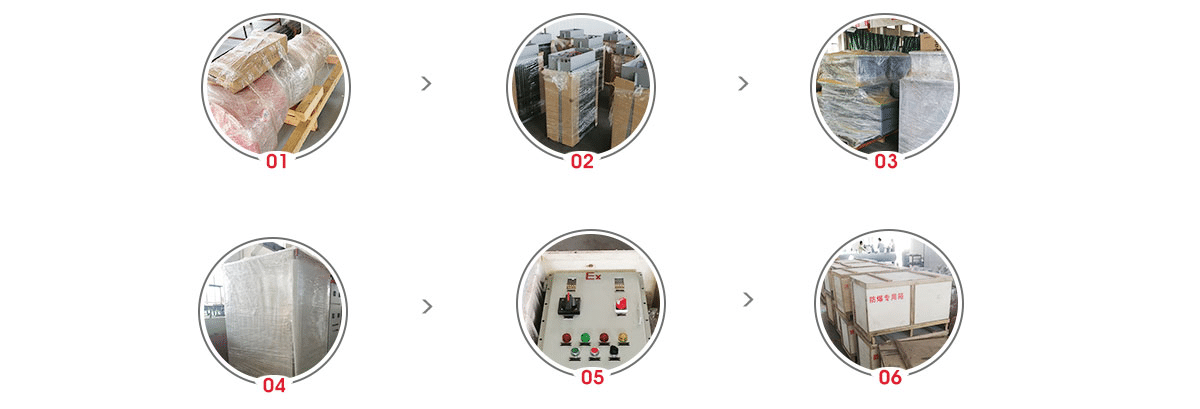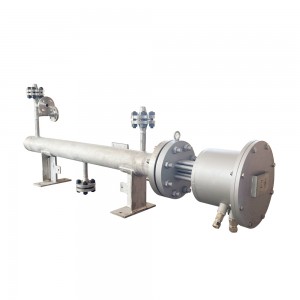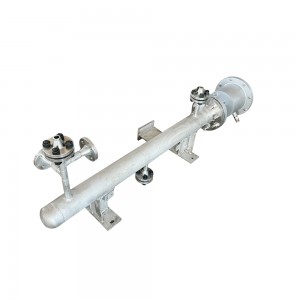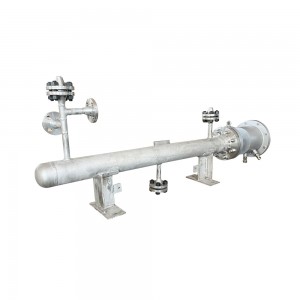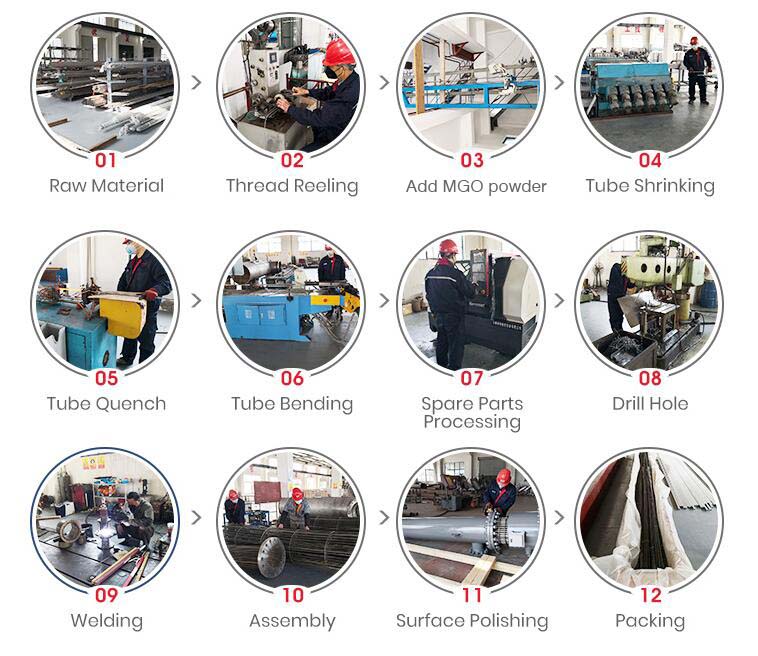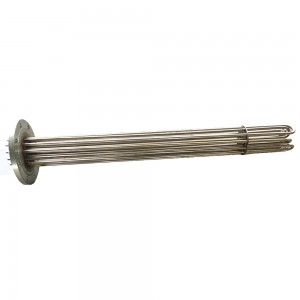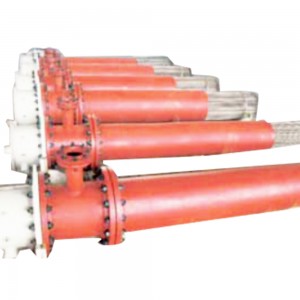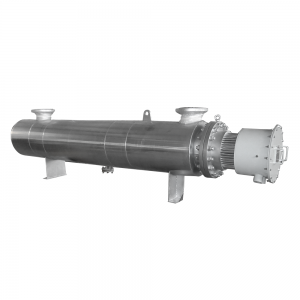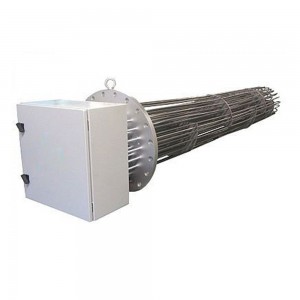415V 10KW Explosion proof industrial electric heater
Explosion-proof electric heater is a kind of consuming electric energy converted into heat energy to heat the materials to be heated. During work, the low-temperature fluid medium enters the input port under pressure through the pipeline, and takes away the high-temperature heat energy generated by the electric heating element along the specific heat exchange channel inside the electric heating vessel, using the path designed by the principle of fluid thermodynamics. The temperature of the heated medium rises, and the high temperature medium required by the process is obtained at the outlet of the electric heater. The internal control system of the electric heater automatically adjusts the output power of the electric heater according to the temperature sensor signal of the output port. The medium temperature of the output port is uniform. When the heating element is overheated, the independent thermal protection device of the heating element immediately cuts off the heating power to avoid The over-temperature of the heating material causes coking, deterioration, carbonization, and in severe cases, the heating element burns out, effectively extending the service life of the electric heater.
Heating of chemical materials in the chemical industry, some powder drying under certain pressure, chemical process and spray drying
Hydrocarbon heating, including petroleum crude oil, heavy oil, fuel oil, heat transfer oil, lubricating oil, paraffin, etc.
Process water, steam, molten salt, nitrogen (air) gas, water gas and other fluids that need to be heated.
Due to the advanced explosion-proof structure, the equipment can be widely used in explosion-proof places such as chemical industry, military industry, petroleum, natural gas, offshore platforms, ships, and mining areas.
1.Are you factory?
Yes, we are factory, all customers are more than welcome to visit our factory .
2.What are the available product certifications?
We have certifications such as: ATEX, CE, CNEX. IS014001, OHSAS18001,SIRA, DCI. Etc
3.How to Choose an Industrial Heater?
It is important to consider the specifics of your application prior to selecting the heater to use. Of primary concern is the type of medium being heated and the amount of heating power required. Some industrial heaters have been specially designed to function in oils, viscous, or corrosive solutions.
However, not all heaters can be used with any material. It is important to confirm the desired heater will not be damaged by the process. In addition, it is necessary to select an electric heater that is appropriately sized. Be sure to determine and verify the voltage and wattage for the heater.
One important metric to consider is Watt Density. Watt density refers to the heat flow rate per square inch of surface heating. This metric shows how densely the heat is being transferred.
4.What type of temperature sensors are provided with the heater?
Each heater is provided with temperature sensors at the following locations:
1) on the heater element sheath to measure maximum sheath operating temperatures,
2) on the heater fange face to measure maximum exposed surface temperatures, and
3) An Exit temperature measurement is placed on the outlet pipe to measure the temperature of the medium at the outlet. The temperature sensor is a thermocouple or PT100 thermal resistance, according to customer requirements.
5.What other controls are needed for safe operation of the process heater?
The heater needs a safety device to ensure the safe operation of the heater.
Each heater is equipped with an internal temperature sensor, and the output signal must be connected to the control system to realize the over-temperature alarm of the electric heater to ensure the safe operation of the electric heater. For liquid media, the end user must ensure that the heater can only work when it is completely immersed in the fluid. For heating in the tank, the liquid level needs to be controlled to ensure compliance. The outlet temperature measuring device is installed on the user's pipeline to monitor the exit temperature of the medium.

